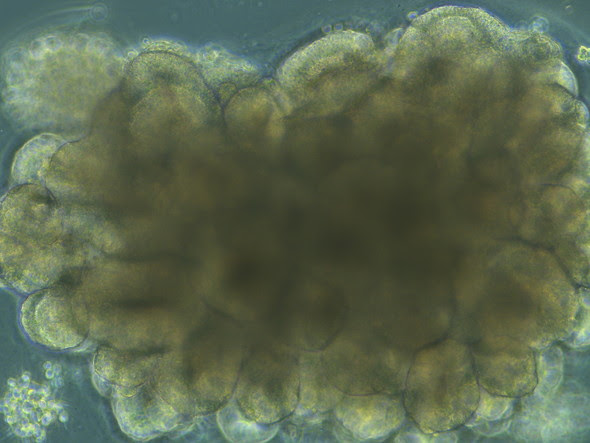 | |
Friday, June 14, 2019NIAID Scientists Develop ‘Mini-Brain’ Model of Human Prion Disease
NIAID scientists have used human skin cells to create what they believe is the first cerebral organoid system, or “mini-brain,” for studying sporadic Creutzfeldt-Jakob disease (CJD). CJD is a fatal neurodegenerative brain disease of humans believed to be caused by infectious prion protein. Human cerebral organoids are small balls of human brain cells ranging in size from a poppy seed to a small pea. Their organization, structure, and electrical signaling are similar to brain tissue. The researchers hope the human organoid model will enable them to evaluate potential therapeutics for CJD and provide greater detail about human prion disease subtypes than the rodent and nonhuman primate models currently in use. Cerebral organoids have been used as models to study Zika virus infection, Alzheimer’s disease, and Down syndrome. |
domingo, 16 de junio de 2019
NIAID Scientists Develop “Mini-Brain” Model of Human Prion Disease | NIH: National Institute of Allergy and Infectious Diseases
NIAID Scientists Develop “Mini-Brain” Model of Human Prion Disease | NIH: National Institute of Allergy and Infectious Diseases
Suscribirse a:
Enviar comentarios (Atom)






















.png)










No hay comentarios:
Publicar un comentario